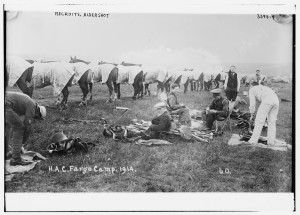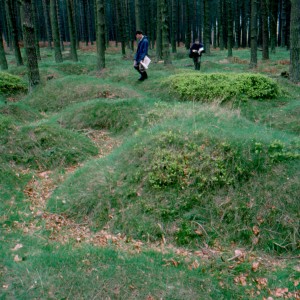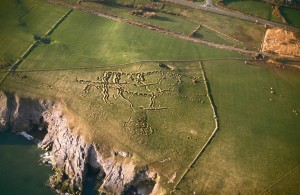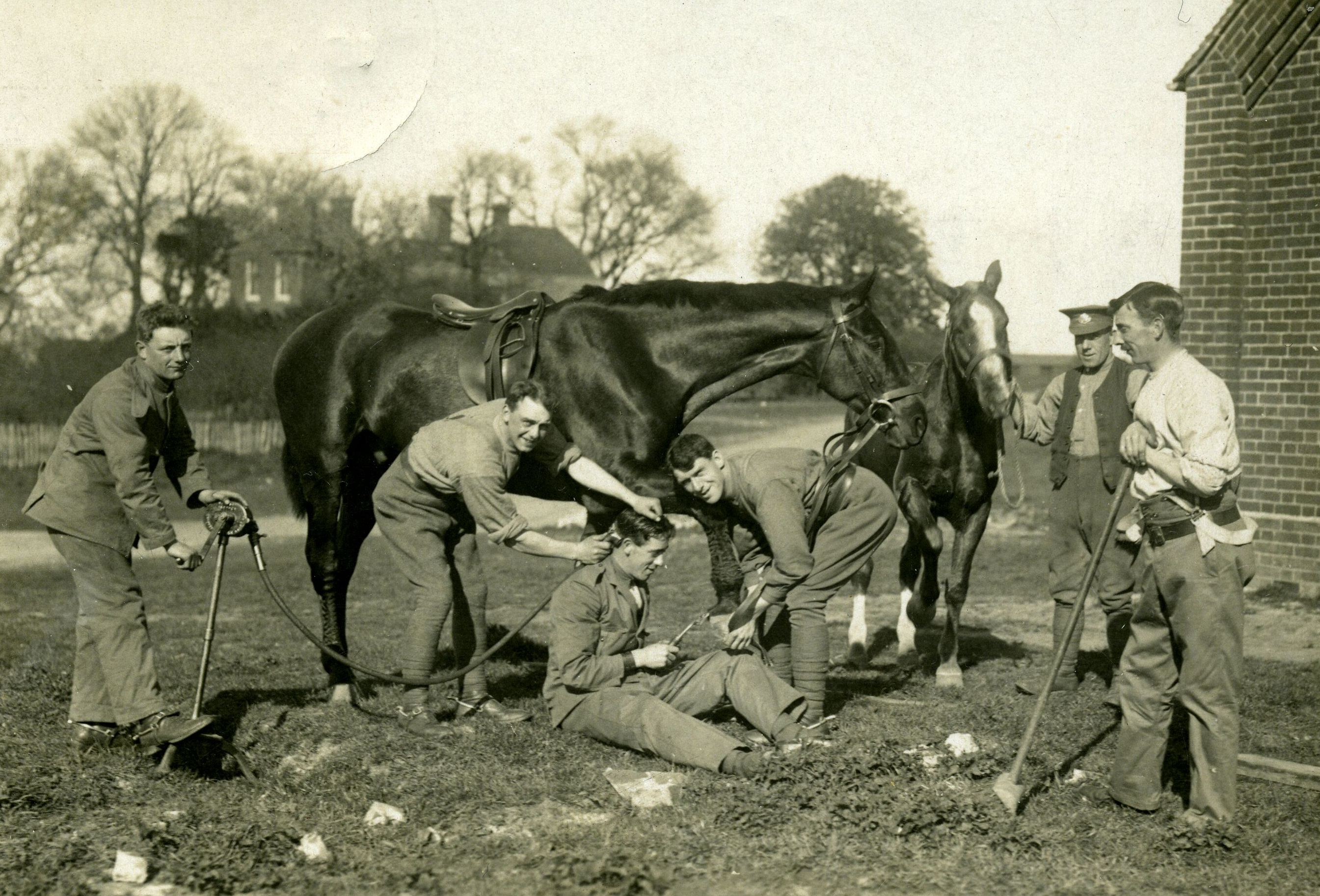Practice trenches
Preparing troops for battle
It is commonly believed that ill-trained troops were sacrificed in the trench war against the Germans on the Western Front. But archaeological evidence in England, in the form of elaborate training trenches, instructional models such as the Messines Model on Cannock Chase and full-size mock-ups of the German lines, is increasingly revealing the military’s attempts to provide soldiers with realistic training just as pre-deployment training is carried out today. Despite these preparations, the murderous firepower of artillery and machine-guns meant that millions died on the battlefields.

Honourable Artillery Company of the British Army, Fargo, Salisbury Plain. Courtesy Library of Department of Congress
Practice trench systems
Remains of practice trenches, where thousands of troops trained before departing for the Western Front, survive all around the UK, on clifftops and hillsides, in woods and in fields. Many are revealed by aerial photography or on old plans and photographs. Others are now overgrown in woodland or heathland and their purpose is forgotten but can be identified from the distinctive zig zag of the front lines.
A full scale practice battlefield has been discovered at Browndown Camp in Gosport, Hampshire and was recorded by Council for British Archaeology President, Dan Snow on 6 March to launch the Home Front Legacy 1914-18 project.

The half scale trench model at Cannock Chase © Wayne Cocroft

Penally Practice Trench System, Pembrokeshire © Crown copyright: Royal Commission on the Ancient and Historical Monuments of Wales © Hawlfraint y Goron: Comisiwn Brenhinol Henebion Cymru
Read more about Britain’s preparations for war in the English Heritage Conservation Bulletin on the First World War.






